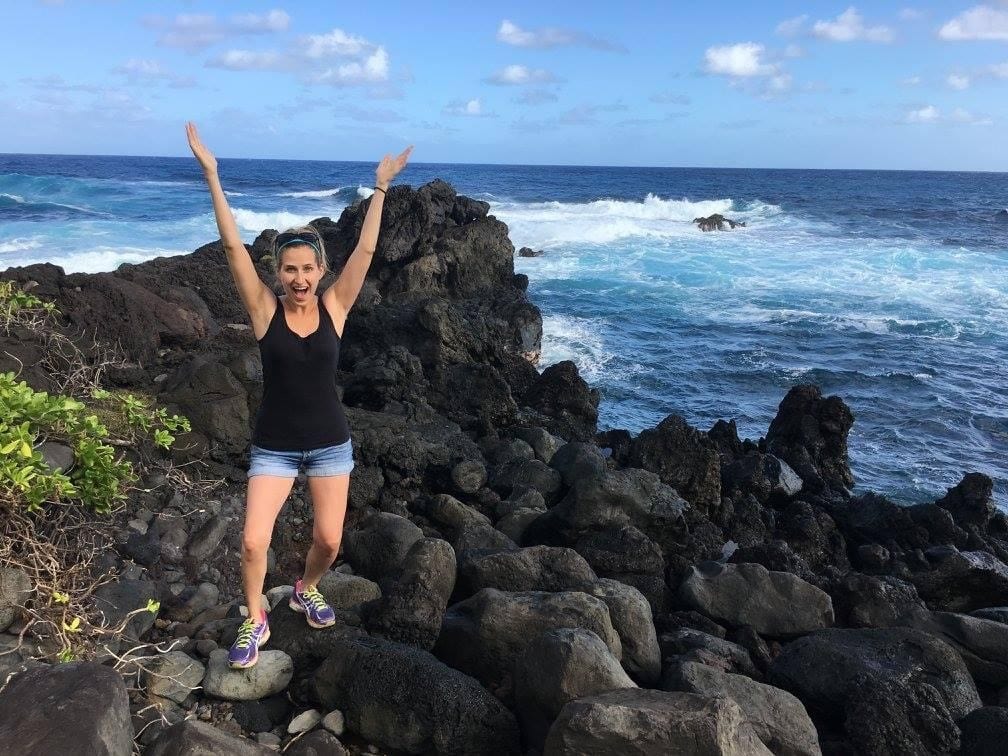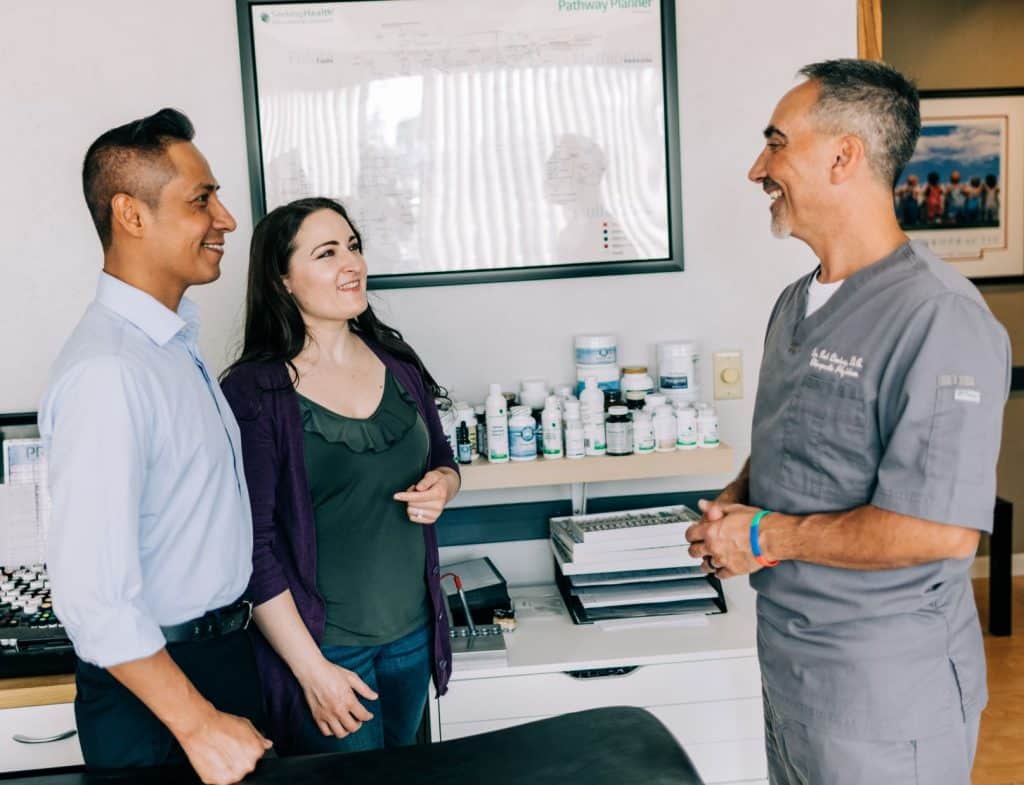(Don’t want to read the intro with my backstory? I won’t take offense! You can jump to the main message.)
As my fingers hit the keyboard, my eyes well up with tears at the thought of this topic. I never expected it to evoke such strong emotions… but it turns out this is a very emotional topic for me. Because, had you asked me in my teens or early 20s what it took to be healthy, I’m not sure I’d be able to answer you. Or I would give an answer that fell very short of the truth. Why?
Because I wasn’t healthy. I didn’t know what it meant to be healthy.
But you wouldn’t have known that just by looking at me. On the outside, I looked like a healthy young woman. My naivety led me to believe that as long as I was choosing meals with packaging claiming to be ‘lean’ or ‘low fat’, and keeping my calories in vs calories out pretty even, I was ‘nailing it’ with being healthy. I thought that doing some sit ups while watching TV and walking around campus was a pretty good level of exercise for me since my weight was normal.
What you wouldn’t see was the severe joint pain that left me in tears from merely bumping my hand on my desk, the fatigue that made it impossible to get through the day without multiple naps, or the brain fog that made my schoolwork incredibly difficult and time-consuming. I just assumed that these happened to me strictly because I was ‘unlucky’ and autoimmune disease ran in my family.
It wasn’t until I started seeing Dr. Rob here at Valeo that my life got (as the Fresh Prince would say) flipped-turned upside down. I started to learn what it actually meant to have great health and what I needed to do to achieve it.

The Path to Great Health
I first saw what is now my favorite quote when I was in graduate school. Written on a fence near the main building were the words, “Knowledge is only potential power.” I’ve thought back to this quote again and again while thinking about what it takes to have great health, because great health starts with knowledge, but it certainly doesn’t end there.
Looking back on my own journey to great health, these are the steps that I’ve identified that helped me get to where I am today.
Step One: Know What Great Health Means
The first step to great health is knowing what having great health actually means: what it looks like and feels like. I say this because if you don’t know what great health is supposed to look or feel like, how will you know if you are “there” or not? And if you’re not “there,” but the idea of great health isn’t even on your radar (like when I assumed that my pain was a normal-for-me thing based on family history of autoimmune issues), you probably won’t be motivated to move on to step two.
It’s also important to recognize that great health is not just physical. It extends to mental, emotional, and spiritual health, too!
Step Two: Gaining Knowledge on Healthy Diet and Lifestyle Practices
When you think of those who are successful in their field, how do you think they got there? Were they just born naturally talented or smart? That might play a small role, but what makes a bigger impact is that they gained knowledge on how to capitalize on those talents and smarts. Olympians research the best ways to train and recover. The best scholars understand different study techniques and know the ones that work best for them.
Just like those who achieve success in their field, you can achieve success in your health. If you’re born healthy, that doesn’t mean you will have great health if you don’t do anything to continue to support it. And if you were born in less-than-optimal health, that doesn’t mean that you have to stay in that unhealthy state. The beautiful thing about gaining this knowledge is that it can be used by anyone, regardless of what level of health you’re at right now.

The quickest and easiest way to make it through this step is to work with practitioners who are knowledgeable on the best diet and lifestyle practices. (You can certainly take a DIY approach here, but working with a professional typically saves you time, money, and lots of trial-and-error in the long. The right practitioners can help you determine the best approach for your diet and exercise based on YOUR unique body!)
Step Three: Getting a Baseline and Put Your Knowledge to Action
This is probably most people’s least favorite step because it is the hardest. This is where ‘knowledge is only potential power’ comes into play. If we know all the things we can and should be doing for our health but we don’t actually do them, what good are they?!
Before you implement your knowledge, I always recommend getting a baseline so you can see how your actions are affecting your health in a more objective way. It can be easy to miss all the progress we are making if we don’t track it! Valeo offers both wellness physicals that test all parts of the body (including the brain, which controls everything else) and a great comprehensive blood panel that works well for this step.
Once you have your baseline, start implementing the knowledge you’ve gained (e.g. improving your diet according to what your practitioner recommended, starting your workouts, implementing stress management, starting your supplements).
It may sound like a lot, but you can take this step-by-step! I also recommend working with a health coach who can help you break it down into more manageable changes, so it’s not too overwhelming. When we try to make too many changes at once (or even too big of a single change at once), we often end up giving up because it’s ‘just too much’. Remember, one sustainable change will do more for you than changing EVERYTHING only to go back to old habits after a couple of months.
Step Four: Help Others Around You
How on earth does helping others around you help YOU to achieve great health?
Studies show that our network of friends and family has a BIG impact on our health. The people you surround yourself with influence you in many ways, including your view of health and the choices you make that impact it. By helping others around you to also be cognizant of their health and to make choices that support good health, you can continue to improve your own health and wellbeing.
The added bonus is that then you also have healthy friends and family who can accompany you on more of life’s adventures!
Step Five: Check-in On Your Health Often
This is where your baseline from Step Three comes in handy! You can (and should) use the same test to see how far you’ve come and how your body is responding to the changes you’ve made. With the comprehensive panel at Valeo, it’s helpful to see how major indicators like C-Reactive Protein, Hemoglobin A1C, cholesterol, triglycerides, and thyroid are doing. If you see improvement, you’re on the right track! If you see any kind of worsening, you can make sure to check in with your doctor about what could be contributing to the issue.
For these check-ins, It’s also very helpful to take the time to reflect on how you are FEELING. Do you have more energy? Are you sleeping better? Is your mood stable and generally improved? These are also all great indicators of your overall health.
Achieving Great Health (In a Nutshell)
What great health boils down to is intentionally informed and proactive. By understanding good health practices that can be tailored to YOU and taking the time and effort to follow through with them, you can make a big impact on your health not just now, but for years to come. (By the way, choosing a chiropractor as your primary care provider can help you take that intentional proactive approach. Learn how here.)




